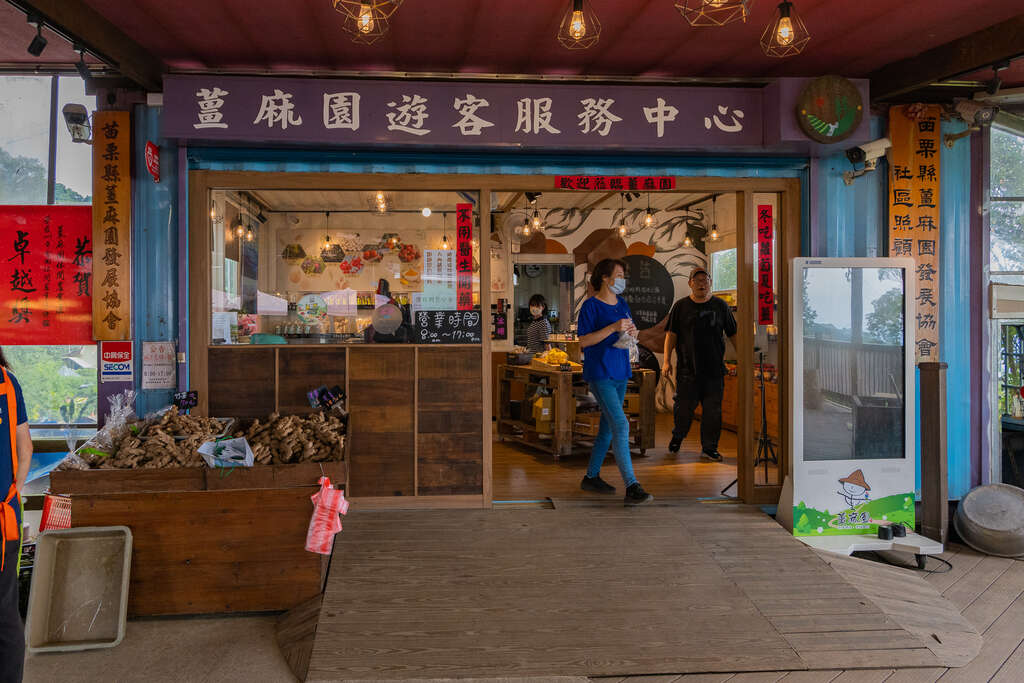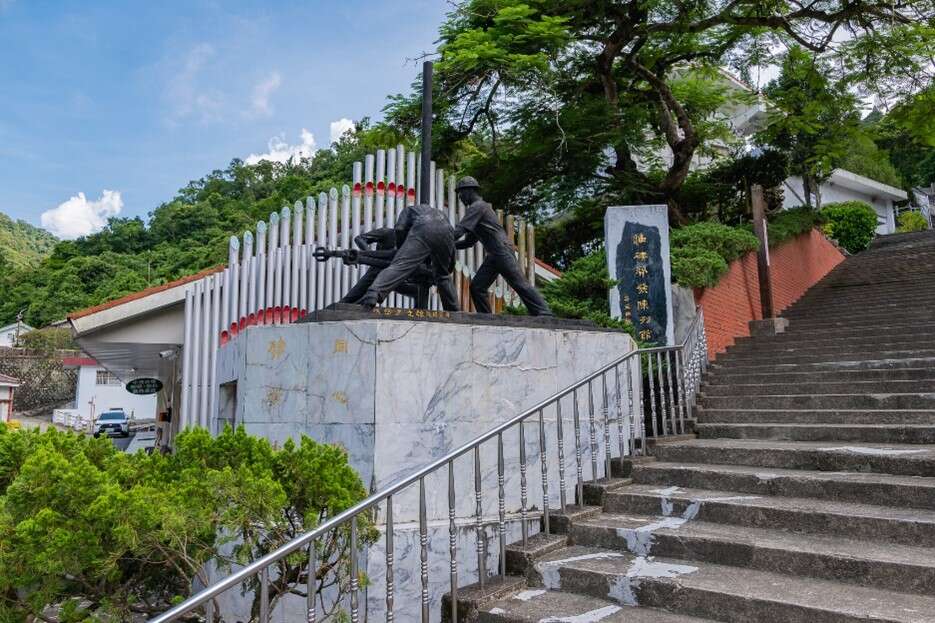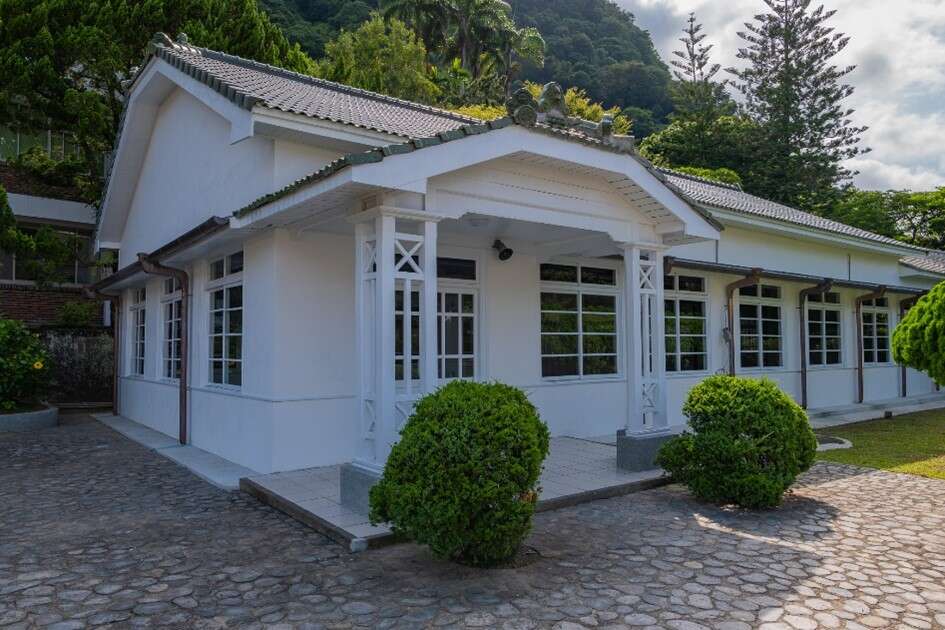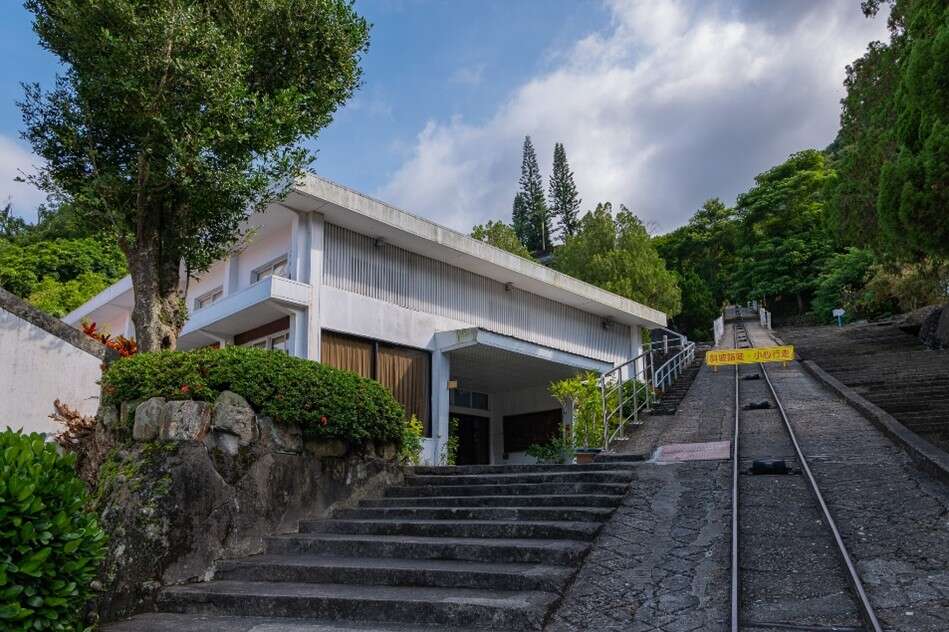※Can enter/exit from both ends
※Can enter/exit from both ends
※GPX files must be opened with suitable apps, such as Hikingbook.
Chuguan Ancient Trail used to be an Aiyong Line (the defense line against the indigenous people in Qing Dynasty) . In the past, it also provided important access to Dahu, Sanyi, Tongluo, and Gongguan. Linking Chuhuangkeng to Guandao Mountain, at present, the most popular section is centered around Ginger Garden, which divides the trail into the north section, Shifendong Ancient Trail, and the south section, Chuguan Ancient Trail Shengguan section. In spring and summer, you can enjoy snow-white tung flowers; and in autumn and winter, you can immerse yourself in the foggy mountains and forests. At Ginger Garden, you can have a cup of warm ginger tea. There are different types of beauty and fun in all seasons.

Let's visit Chuguan Ancient online first!
- There are dense forests along the ancient trail. Besides the abundant phytoncide, it is also very cool and pleasant to walk.
- The altitude is high and there are many observation decks and viewing platforms where you can overlook the mountains and surrounding towns and cities.
- Chuguan Ancient Trail was an important transportation thoroughfare in the old days. Many traces of the history can be seen along the way.
- There are no toilets on the ancient trail. It is recommended that you use the restroom at Shifendong Tea Pavilion, Ginger Garden visitor center, or Shengheng Temple before your hike.
- This ancient trail goes through forests. Some sections can be slippery. It is recommended that you bring equipment such as trekking poles.
- Environmental protection is a shared responsibility. Do not litter on the ancient trail.


From north to south, Chuguan Ancient Trail is divided into Chuyun Ancient Trail, Chuguan Ancient Trail – Yundong section, Chuguan Ancient Trail – Shifendong section, and Chuguan Ancient Trail – Shengguan section. The total length is about 20 kilometers. With the opening of the industrial road, this trail gradually declined. In recent years, Miaoli County Government restored the Shifendong section and the Shengguan section, the total length of which is about 6.5 kilometers. With Ginger Garden as the starting point, routes of different lengths have been planned with different end points (for turning back). Visitors can consider their own physical strength, turn back where they see fit, and enjoy hiking the different sections.


As the trail is mostly on the ridgeline, the terrain and slope gradient change quite drastically. Some sections are paved with slate steps, and some sections require using ropes to climb. As the slope is steep, it is quite a challenging hike.


There are many signs, mileage markers, and map signs along the trail. You can clearly grasp your current position and the remaining distance. There are also information boards along the way. Even without a guide, visitors can gain some basic understanding in the ecology around the trail.


Shifendong Tea Pavilion is a landmark on Chuguan Ancient Trail. In the past, the trail was a major thoroughfare. Tea pickers served tea here to people taking a break here during their journey. It is a century-old tea pavilion with stories and value. It is also the only tea pavilion that is a county-designated monument in Taiwan.

From Ginger Garden towards the north, you can take the Shifendong section. After passing through the Ginger Garden observation deck, you will start to hear the sounds of insects and birds in the mountains. After walking for some distance, you will enter the dirt road in the forest. With dense phytocide in the air, butterflies, insects, and the beautiful forest also come into sight. After that, the paved road that follows is relatively flat. Finally, you will arrive at Shifendong Tea Pavilion.


From Ginger Garden towards the south, you can continue onto the Shengguan section. The so-called Shengguan section refers to the section from Shengheng Temple to Guandao Mountain. This section is short, but with steep slopes and primitive mountain trails. Visitors with a certain level of strength are better suited for the challenge.

Guandao Mountain, also known as Caopai Mountain or Chaqidong, is Taiwan's Little 100 Peaks No. 36. The Guandao Mountain trig point located near the exit of the Shengguan section is also the highest point of Chuguan Ancient Trail. It is a popular photo spot.
Chuguan Ancient Trail is located on the ridgeline. West of the ridgeline is a state-owned forest with diverse plant species. Along the trail, there are bamboo forests, firs, and wood-oil trees. Walking under the dense shade of trees, you can feel the cool breeze even in the hottest summer.


There is a peculiar rock wall in the Shifendong section. It is an obvious landmark on the ancient trail. The rock is called Dongpo meat rock wall because of its weathered appearance that resembles a chunk of Dongpo meat.
Xinbaierfen Mountain, formerly known as Rongshudong (Banyan Mountain), the mapping control point at the top of the mountain is located next to Baishou Pavilion, which is at the turnaround point for the mid-length route. Visitors can take a break here before continuing their hike.



Yundong Mountain observation deck is about five stories high. You can enjoy a 360-degree panoramic view here. There is different scenery in different directions. Photography enthusiasts gather here to take pictures of sunsets and sea of clouds.

Along the stairs up to the top floor of the observation deck, you can see that there are shrines for different gods on each floor, including Guanyin, Confucius, and Wenchang Dijun. There are seats on the for visitors to rest.
Ginger Garden visitor center is where visitors can take a break and enjoy warm ginger tea after their hike. Local products from independent farmers are also sold here to facilitate the development of local industries. On special days such as Guangong's birthday, Peach and Plum Festival, and Ginger Festival, festive activities are held here to promote local eco-tourism.
Shengheng Temple in Ginger Garden is dedicated to Guangong, also known as Enzhugong, who is widely worshipped by the Hakka people. The predecessor of Shengheng Temple is Xuanhua Hall, which was built in 1932. Originally, it was a shrine Mr. Qiu Mingde built for his own house. Later, due to the growing number of worshippers, local gentry initiated the renovation of the temple, and Qiu Mingde donated his house and land to build the current Shengheng Temple.
Chuhuangkeng was discovered in 1861 to be producing oil. At that time, it was mistaken for sulfur, so it was called Chu-huang-keng (out-sulfur-pit) or sulfur cave. The surrounding area began to prosper when the oil wells were functioning on a large scale during the Japanese Rule period. After the recovery of Taiwan, the oil resources depleted, and the area gradually declined. Later, the CPC Corporation turned it into Taiwan Oil Field Exhibition Hall and opened it to the public.






